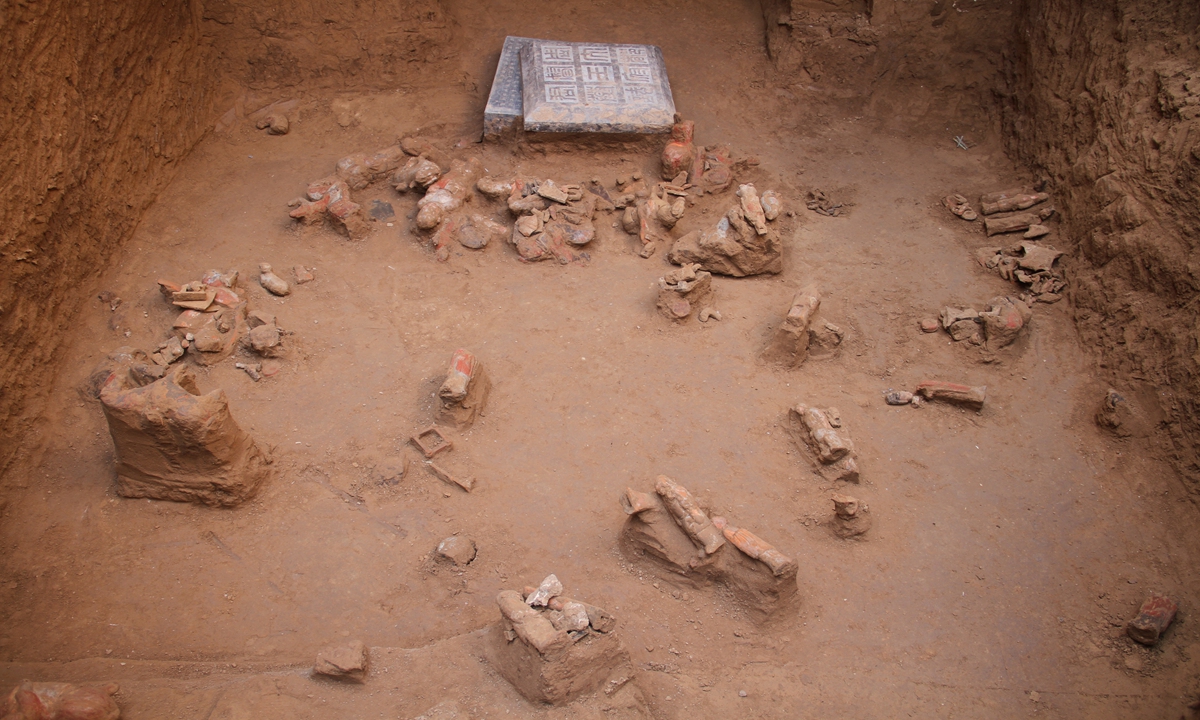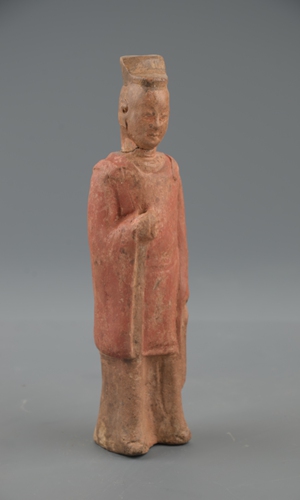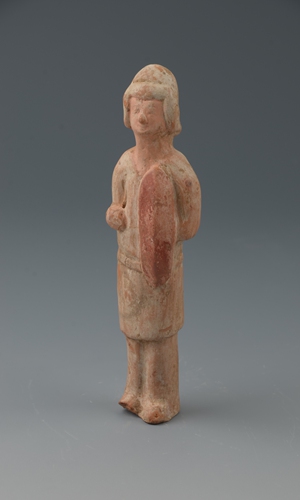Sui Dynasty tomb reveals ancient posthumous marriage culture
By Ji Yuqiao Source: Global Times Published: 2020/7/14 13:48:40

One of tombs in the cemetery Photo: courtesy of the Shaanxi Provincial Institute of Archaeology
The Shaanxi Provincial Institute of Archaeology announced in a press release on Tuesday that the excavation work on the largest Sui Dynasty (581-618) cemetery ever discovered so far has been completed, leading to new discoveries that provide insight into what posthumous marriage was like in ancient China.
The cemetery of the Wang family is an important archaeological discovery that dates from the Northern Zhou Dynasty (557-581) to the Sui Dynasty. It has provided important materials for understanding the characteristics of tombs and the burial rules of family members from the Northern Zhou to the Sui dynasties.
The excavation project began in November 2019 in a village in Xianyang, Northwest China's Shaanxi Province. As the dig progressed, archaeologists discovered that the cemetery belonged to the family of a Sui Dynasty high-level official named Wang Shao.
According to the press release, the cemetery contains seven tombs spread out over an area of about 21,360 square meters, making it the largest cemetery of the dynasty seen so far.

One pottery figurine excavated from the tomb Photo: courtesy of Shaanxi Provincial Institute of Archeology
Seven members across different generations were buried in the cemetery, including Wang Shao, his oldest grandson, an uncle and one of his cousins. Among these tombs, Wang Shao's grave is the largest - 60 meters long and 13.6 meters high.
According to historical records, Wang had many military exploits to his name and earned the trust of the first emperor of the Sui Dynasty. After the death of the first emperor, the following emperor promoted Wang to an even higher position and offered him titles due to his contributions to the government.
Wang Hong, Wang Shao's eldest grandson, died at the young age of 11. After an investigation of his tomb, which is more than 23 meters long and 7.32 meters high, archeological researchers discovered that the young boy had been in a posthumous marriage with another juvenile.

One pottery figurine excavated from the tomb Photo: courtesy of Shaanxi Provincial Institute of Archeology
Posthumous marriage is a kind of marriage in which at least one of the participating members is deceased. Wang Hong was married after his death to another young child who had died young - the granddaughter of a well-known general of the Sui Dynasty. The "couple" was buried together in the same tomb.
The press release explained that this posthumous marriage between an official's family and a general's family reflected the efforts of nobles to maintain their family's status and influence through marriage.
A total of seven funerary objects including pottery jars, bronze mirrors and hooks as well as epitaphs were unearthed in the main chamber of Wang Hong's tomb.
Although Wang Shao's tomb had been previously robbed, a total of 67 funerary objects such as warrior figurines, standing figurines and potteries in the shape of pigs and chickens were discovered scattered around the tomb.
Archaeologists also discovered copper mirrors and hairpins in the other tombs.
RELATED ARTICLES:
Posted in: ART,CULTURE & LEISURE